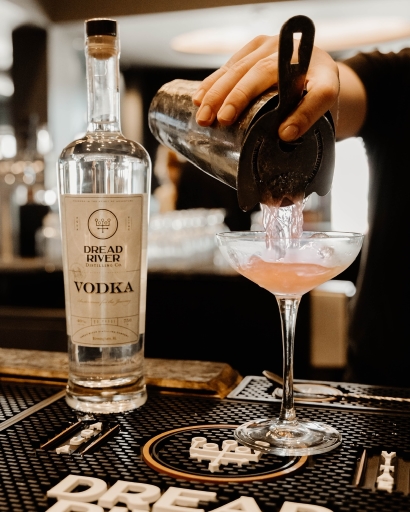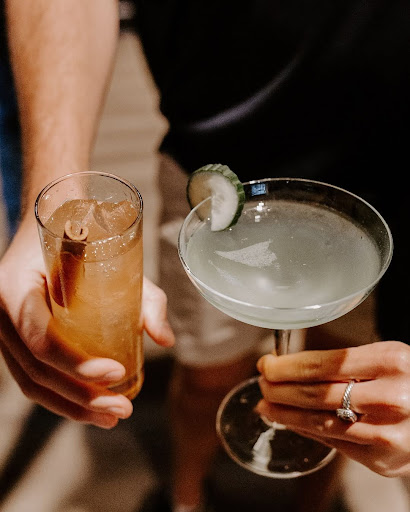How Is Vodka Made: From Grain to Glass
May 5, 2025
Dread River

The first taste of a fine vodka is a revelation—sharp, clean, near-divine in its purity. But standing behind that humble spirit is a quiet ballet of science and human imagination. Imagine this: a farmer in the warm fields of America’s Midwest, harvesting golden ridges of wheat, barley, or rye. Each grain, a repository of nature’s labor, undergoes a miracle of solid to spirit, grain to glass, distilled into a work of art refined over the centuries.

Discovering the art of making vodka in a time progressively obsessed with handcrafted and genuine products is more than just curiosity; it is the appreciation of history and careful attention to detail. The making of vodka is a meticulous science and delicate art.
In this blog, we dive into how vodka is made, from grain to glass. Let’s begin, shall we?
What Is Vodka Made Of? The Essence of Purity
At its essence, vodka is a neutral spirit, but its birthplace determines its delicate nuances. Vodka may have been historically produced from grain: sorghum, corn, rice, rye, or wheat, each contributing a faint whisper of flavor, albeit imperceptible in the untrained mouth.
Grain vodka, made from a blend of wheat, barley, and rye, tends to be smooth and have a sweet underbelly. By contrast, potato vodka leans towards a heavier, creamier mouthfeel, while fruit- and sugar-based vodkas add an evanescent whisper of origin. What sets world-class vodka apart is not so much what it’s made of but the degree of skill involved in the process.
For a detailed analysis of the various base ingredients found in vodka production, check this out.
How Is Vodka Made? A Symphony of Transformation

Fermentation: Where Science Meets Alchemy
Fermentation is the first step in vodka production, where grain, replete with starches, is transformed into fermentable sugar. This simple carbohydrate-laden drink is subsequently transformed using yeast, water, and enzymes, releasing carbon dioxide and ethanol in a biochemical dance as old as civilization itself.
Now, the judicious selection of yeast strains comes into play, influencing the final personality of the spirit in a gentle manner. A good fermentation process assures that the wash, a low-alcohol liquor, has the ideal proportion of flavors before distillation.
How is Vodka Distilled? The Quest for Purity
The purity of vodka is simply its distillation. Vodka seeks purity rather than complexity, unlike aged spirits, which search for complexity rather than purity. The spirit is distilled and purified using classic pot stills or continuous column stills; many distillations guarantee that only the purest ethanol remains.
Distilleries frequently use multi-column distillation to get rid of congeners, or impurities that introduce undesirable taste. Some vodkas use triple, quadruple, and even quintuple distillations; every subsequent run purifies the liquid further. Only the finest distilleries cut the distillation precisely, separating the “heads” (harsh, volatile elements) and “tails” (oily residues) from the “heart”—the unblemished center cut of the distillation.
Filtration: The Elixir of Smoothness
Defining vodka’s quality requires additional attention through filtration, not just in the process of distillation. Some distillers use quartz sand, silver, or even diamond dust to improve smoothness, while others filter their liquors through activated charcoal to eliminate any remaining contaminants.
The filtration controversy continues to raise eyebrows with master distillers, with some arguing that over-filtration removes the heart of the spirit. For those who are after the highest level of sophistication, ultra-filtration delivers a silken texture on the palate.
Check this article out to know why filtration matters while distilling vodka.
Vodka’s Versatility: Beyond the Martini
No spirit is as versatile as vodka. It moves from an elegant base in traditional cocktails to a bold ingredient in kitchen use. While its use in the Martini is undoubtedly legendary, vodka’s versatility goes far beyond this timeless cocktail.

- Infused Vodkas: Modern mixologists keep the boundary-pushing with infusions made from anything from unusual spices to seasonal fruits, delivering unmatched flavor depth.
- Cooking With Vodka: Since vodka lacks any flavor, it is a perfect deglazing liquid for fine sauces, especially Italian sauces, to enhance flavors without dominating them.
- Creative Cocktails: More than just the Moscow Mule and Bloody Mary, new-age bartenders prepare innovative cocktails with vodka mingled with unsuspected ingredients such as lavender, beetroot, and truffle oil.
- Mixology with Health Benefits: Many vodka cocktails remain the preferred mixology choice among low-calorie drinks because the spirit contains fewer carbs than the rest of the liquors.
Looking for boundary-defying mixologists? Check out this masterclass on innovative vodka cocktails.
Choosing the Right Vodka: A Connoisseur’s Guide
Choosing a high-end vodka takes discernment. Keep the following in mind to guarantee an unparalleled drinking experience:
- Base Ingredient: Grain vodkas are lighter and smoother, while potato vodkas provide a rich, creamy mouthfeel.
- Distillation & Filtration: More distillations generally equate to a cleaner spirit, while filtration methods determine smoothness.
- ABV and Mouthfeel: Now, if you’re someone who enjoys a stronger drink, you’ll probably be drawn to those vodkas that pack a punch.
- Terroir and Craft: Small-batch distilleries tend to employ traditional techniques and local grains, so their profile is very distinctive.
- Tasting notes: The neutral quality of vodka is often emphasized. Some brands speak well about minerality, while some have that delicate sweetness about them.
A Journey Etched in Crystal Clarity
The initial taste of a high-quality vodka is one of revelation—sharp, clean, nearly otherworldly in its transparency. Essentially, there has been a delicate dance between science, heritage, and human creativity behind the veil of this crystal essence. This paints a picture of an inline crop farmer, happily peering at the bountiful sun-drenched fields in the American Midwest, harvesting golden waves of wheat, barley, or rye. Each grain, a precious memory of nature’s toil, undergoes a release from solidity into essence, grain into glass, heavy-dead condensed in an act of art tempered through centuries.
In an age when craftsmanship and authenticity are so highly prized, learning the art of making vodka is not merely a novelty but a tribute to tradition and to careful craftsmanship. From the fermentation of the sugars by the introduction of yeast to the highly specific distillation procedures that produce only the purest ethanol, vodka is produced both as an exact science and an exquisite art.
Craft Vodka: A Resurgence of Artisanal Excellence
More than just a component in a cocktail, vodka embodies purity, workmanship, and history. Every bottle tells a story of tradition, science, and artisanal expertise from the verdant green grain fields to the meticulous hands of distillers. As craft distilleries enjoy a global revival, vodka has moved far beyond its perception as a vapid spirit. Alabama craft distilleries are among those pioneering small-batch methods of making vodka, using terroir, local crops, and other unique finishing procedures. The payoff? A vodka renaissance that revitalizes the drinking experience through local cuisine and creative style.
For instance, Dread River Distilling Co. is raising the art of vodka by using only the best grains and rigorous distillation techniques. Its emphasis on quality indicates the importance of place and process in creating a truly premium vodka experience. Still not convinced? See it for yourself by booking a tour!
The next time you raise a glass, pause to honor the path from a simple grain to an elixir of smoothness, a monument of human invention, and a never-ending search for perfection.